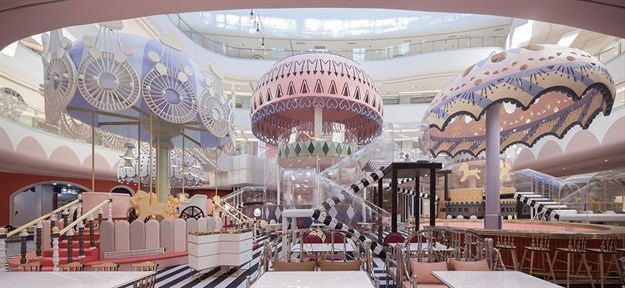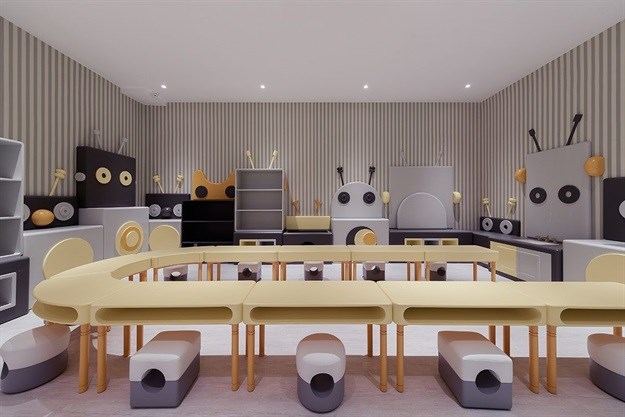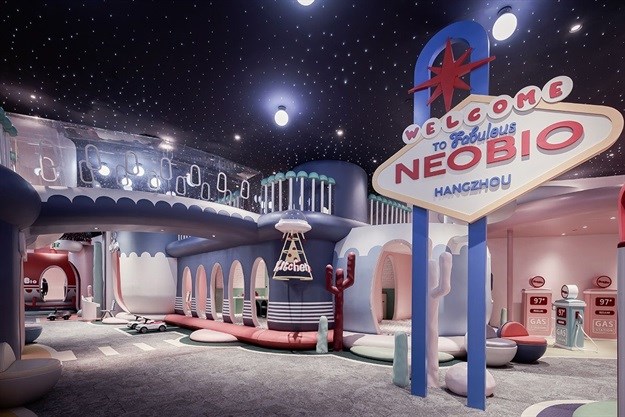
According to Li Xiang, the chief designer, its aesthetic concept was derived from the abstraction of scenario modes, which focused on coordinated integration of colours and composition rather than style interpretation. Since the family park is located at the riverside, they drew inspiration from the natural views in the composition of the design.
The project occupies the first floor of Hangzhou Star Avenue Phase, a shopping mall that has been redefined by the designers. Based on the original layout of the shopping mall, Hangzhou Neobio Family Park was divided into four major functional areas, each with multiple accessory spaces.

Such division took into account age groups, interests and behaviours of kids, while at the same time combining functions for entertainment, education and rest during parent-child activities. The reasonable circulation in the space makes it a comprehensive family park that integrates entertainment and education activities.
The dining and entertainment area is a comprehensive resting place. This area is situated at the atrium of the shopping mall. In order to make it possible for consumers above the ground floor to have a clear view of this area, X+Living designed the space with its top part reaching the third floor, which also enables consumers in Neobio Family Park and those upstairs to have eye contact. The creative design in the atrium made it a space full of vitality and interactivity and, more importantly, improved the overall aesthetic quality of the shopping mall with distinctive details as well as an enriched experience for consumers.


"We took parasol-shaped structures as main structures in this area, which strengthened the visual tension in the space and marked out the location of different functional spaces in the area. Seats dotted in the space including the carousel added a romantic atmosphere in the space," explained by the firm.
In the reading area, the designers presented a spectacular scene that the sun shines after the rain through drawing inspirations from the relation between rainbow and clouds, and abstracted the composition so that structures designed in this area can served as bookshelves and at the same time allow kids to enjoy climbing and going through holes.

In the experience area, designers made use of abstracted stone elements to build a virtual town for children. It feels like entering into a dreamlike kingdom where they can experience different scenes of life - you can see market, kitchen, gas station, market, bank, cafe, etc.
There is also a climbing area, where the boxes were integrated together with elaborate handling, so that it seems that the structure is telling stories that are waiting for the kids to explore.
The project was defined as a parent-child activity centre, but the designers embedded water play area and party rooms into the space. The main circulation and auxiliary circulations were designed in a way that maximised the use of the space and optimised the experience for consumers. All the furniture and lamps were specially designed and processed for the project, which ensured all the structures and colours were perfectly matched.

This is the second Neobio Family Park lead by Li Xiang, who thinks that it is not only a combination of functions and aesthetics, but more importantly an experimental design that explores the layout of shopping malls in the future, given that people rely more and more on online shopping, and experiential places need to be integrated with retail to attract them.
Article originally published on World Architecture Community.

Since 2006, World Architecture Community provides a unique environment for architects, architecture students and academics around the globe to meet, share and compete.
Go to: https://worldarchitecture.org/
